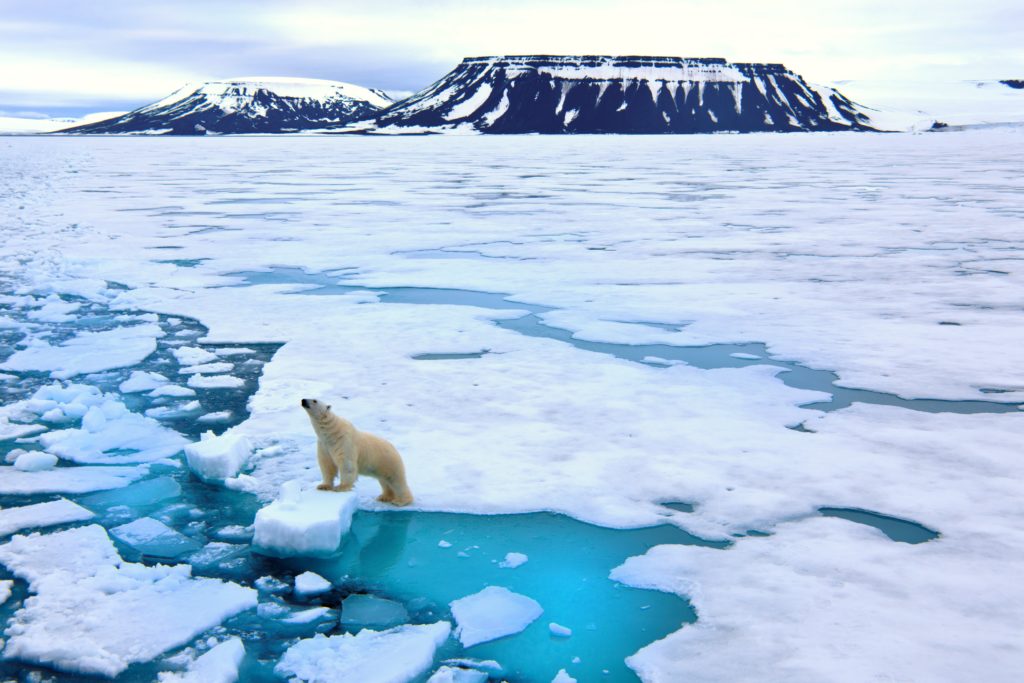The Melting Ice Caps: Nature's Cry For Help!

Forests and the oceans are on fire, there are tsunamis and hurricanes, and almost half the world is flooding. Seems like an elaborate plot by a Marvel or DC super-villain to destroy our planet. Well, it’s not! This catastrophic climate change is caused by us, humans!
The Earth is heating up due to pollution and harmful emissions, and this change in the temperature is impacting the ice caps. They are melting at an alarming rate, altering the natural processes and leading to a global climate crisis. Let’s explore the reasons behind the rapid melting of the ice caps and how we can slow it down.
What Are Ice Caps And How Do They Form?
Ice caps are a thick layer of ice and snow covering the lands that have lower exposure to the sun, i.e the North and South Poles. When snow accumulates in these regions, some of it might melt slightly in summer. This melted snow hardens and compresses in winter to turn into a hard glacial integrant. Layer upon layer of this ice, accumulated over centuries, creates a whole land covered with ice caps. And this precious ice is responsible for keeping the earth cool and being home to a range of animals and birds.
Why Are Ice Caps And Glaciers Melting?
Glacial melting is a natural phenomenon that occurs every few years. However, since the 20th century, scientists have observed rapid melting, which has disturbed the natural cycle of ice formation.
The culprit, the industrial revolution and other man-made factors. These facilitate the emission of carbon dioxide, aerosols and other harmful gases, raising Earth’s temperature. The melted glaciers are calving off into the ocean, wreaking havoc across the world.
Fact: We are losing nearly 31% more ice and snow per year than we did just 15 years ago.
Here’s a timelapse video that shows the rapid change in ice caps from the 90s to now. https://www.youtube.com/watch?
The Impact Of Melting Glaciers On Human Life
Deglaciation has already started affecting the planet. Some of the visible effects are:
● Rising Sea Levels: Since 1961, glacial melting has increased sea levels by nearly 2.7 centimetres. This may not seem much, but imagine this number across all the oceans covering the Earth – it’s quite a lot! In addition, both the poles of the Earth contain enough ice that can increase the sea levels by half a metre on melting. This may change the map of the world as we know it.
● Climate Change: This is a rather indirect impact. Melting of the ice caps and glaciers is known to change oceanic currents. And that alters the global climate causing extreme weather conditions and catastrophic natural disasters.
● Extinction Of Species: Glaciers are the natural habitat of several aquatic and terrestrial animals. Melting of the glaciers means the habitat of these animals getting destroyed, resulting in them going extinct.
Here is a heartbreaking video that talks about the effects of melting ice caps on polar bears: https://www.youtube.com/watch?
Be A Superhero For Our Planet
At individual levels, we need to reduce our carbon emissions into the atmosphere. You can achieve this by:
● Using public transport or carpooling instead of your vehicle.
● Walking shorter distances instead of using any mode of transport.
● Remembering the 3 Rs – Reduce, reuse, recycle.
● Conserve energy by turning off the lights when not in use.
● Using eco-friendly alternatives for plastic.
These seemingly small things could make a world of a difference and save our planet.
Aryaman Darda